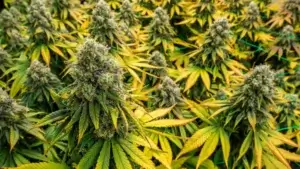Definition:
Cannabielsoin (CBE) (noun) is A rare cannabinoid found in small quantities in aged cannabis plants, CBE forms through the oxidative degradation of cannabidiol (CBD) over time.
Definition:
CBE is a naturally occurring compound in cannabis, resulting from chemical changes in CBD when exposed to oxygen, light, or prolonged aging.
Purpose and Usage:
CBE is primarily significant in cannabis research for its role in understanding the breakdown of cannabinoids and its potential therapeutic benefits. Though not widely studied, it represents a key area for further exploration in aging cannabis products and cannabinoid stability.
How It Relates to Cannabis:
- Forms when CBD undergoes oxidative degradation due to exposure to light, air, or heat.
- Found in trace amounts in improperly stored or aged cannabis.
- Typically isolated during advanced lab testing and analysis of cannabinoid profiles.
- Indicates the chemical evolution of cannabinoids over time.
Common Misconceptions:
- CBE is psychoactive: CBE does not cause intoxication or a “high.”
- CBE is abundant in fresh cannabis: It is only present in aged or degraded cannabis material.
- CBE has established medical uses: Research is still in its infancy, and no clinical applications have been confirmed.
Alternatives:
- CBD: The precursor to CBE, widely known for its therapeutic potential.
- CBN (Cannabinol): A degradation product of THC, often discussed in conjunction with CBE due to its similar formation process.
Importance of Cannabielsoin (CBE):
CBE underscores the complexity of cannabis chemistry and the importance of studying all cannabinoids, including those that form through degradation. By understanding CBE, researchers can gain insights into the aging process of cannabis and explore potential applications for cannabinoids that emerge from this natural transformation.






